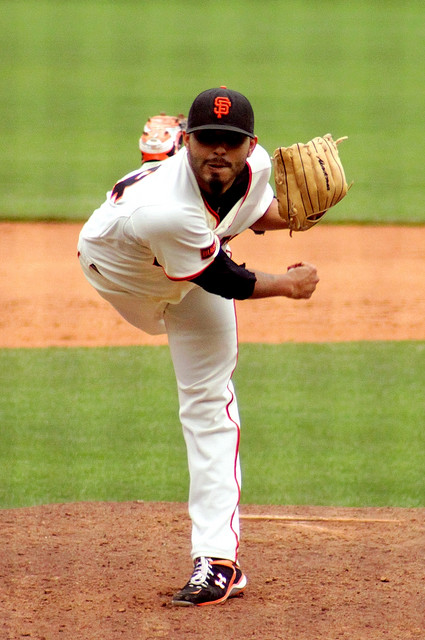Please note: Osher Rainforest will be closed for maintenance Jan. 14–16.
Science News
Seeing a Fastball
May 13, 2013
by Molly Michelson

San Francisco Giants closing pitcher Sergio Romo’s fastball can reach speeds of up to 90 miles per hour. How can any hitter see a ball at that speed accurately enough to hit it?
Well, actually, according to University of California researchers, they can’t. (No wonder Romo recorded over 60 strikeouts last season.)
It takes about one-tenth of a second for the human brain to process what the eye sees. At that rate, a 90 mile per hour fastball would whiz past a slugger, and a tennis ball moving at 120 miles per hour would advance 15 feet before the brain registered the ball’s location.
Publishing last week in the journal Neuron, Gerrit Maus and his colleagues determined that the brain “pushes” forward moving objects so we perceive them as further along in their trajectory than the eye can see.
Using functional Magnetic Resonance Imaging (fMRI) the team located the part of the visual cortex that makes calculations to compensate for our sluggish visual processing abilities. They saw this prediction mechanism in action, and their findings suggest that the middle temporal region of the visual cortex known as V5 is computing where moving objects are most likely to end up.
For the experiment, six volunteers had their brains scanned as they viewed the “flash-drag effect” in different videos. “The brain interprets the flashes as part of the moving background, and therefore engages its prediction mechanism to compensate for processing delays,” Maus says. (You can try this yourself with the UC Berkeley scientists’ flash-drag videos available here, here, and here.)
“The image that hits the eye and then is processed by the brain is not in sync with the real world, but the brain is clever enough to compensate for that,” Maus says. “What we perceive doesn’t necessarily have that much to do with the real world, but it is what we need to know to interact with the real world.”
Too bad the Berkeley scientists can’t somehow improve (or compensate for) umpires’ vision.
Image: artolog/Flickr